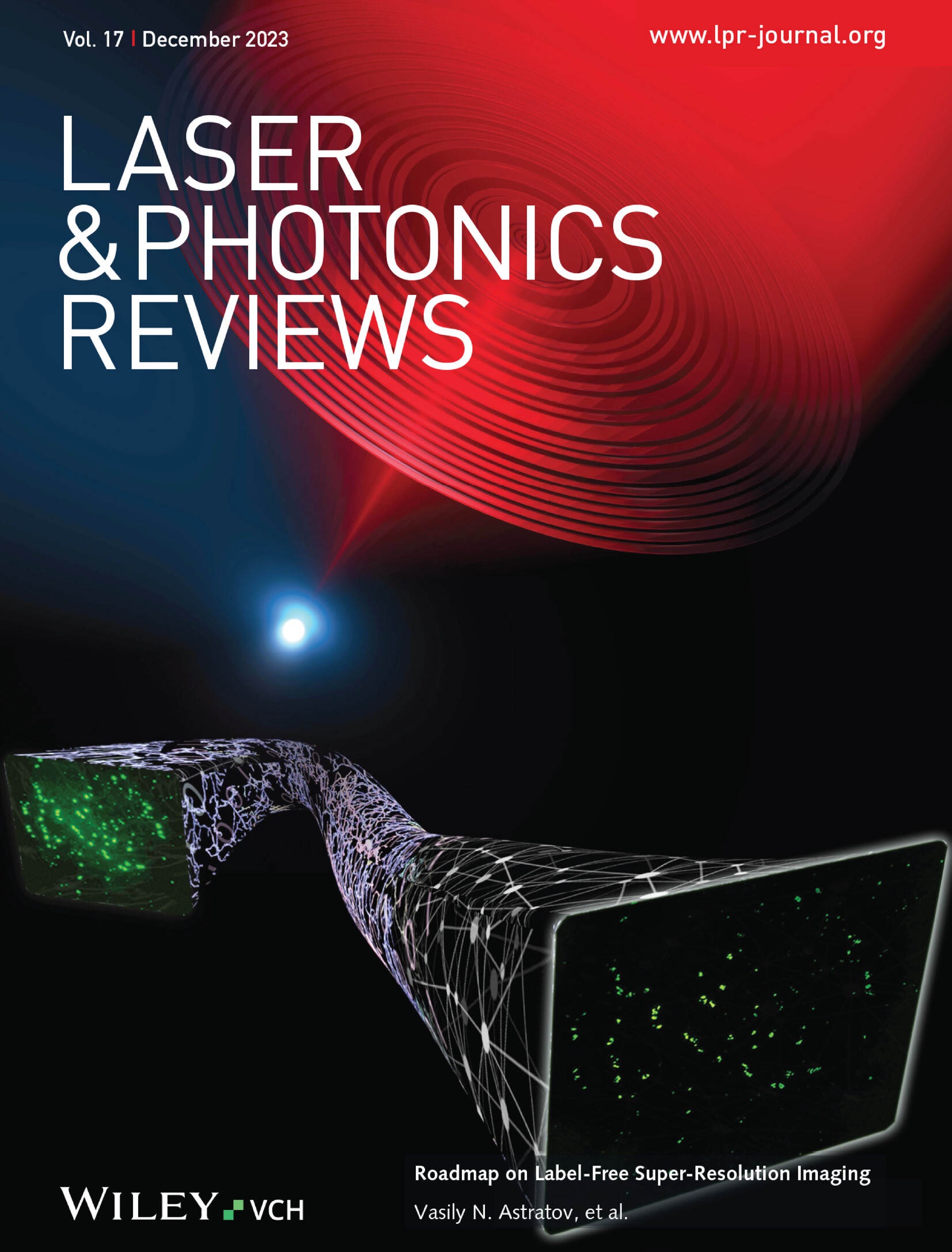非晶碲硒合金:宽带光电子学的一种有前途的候选材料
IF 9.8
1区 物理与天体物理
Q1 OPTICS
引用次数: 0
摘要
本研究首次对非晶碲硒合金光电探测器进行了系统的探索。具体来说,利用脉冲激光沉积技术成功地合成了直径达2英寸的Te0.65Se0.35合金纳米膜,并表现出良好的均匀性。值得注意的是,Te0.65Se0.35合金纳米膜显示出令人印象深刻的霍尔迁移率为20.5 cm2 V - 1 s - 1。相应的Te0.65Se0.35合金光电探测器表现出405 ~ 1550 nm的宽带光响应。在635 nm照明下,器件的响应度、外量子效率和探测率分别达到7.35 A W−1、1440%和1.32 × 109 Jones。通过采用Te0.65Se0.35合金器件作为关键传感元件,实现了在低损耗窗口内超越人类视觉和光通信应用的概念验证宽带光电成像应用。此外,阵列器件的制备已成功验证,表现出合格的器件间变化,为实际生产奠定了坚实的基础。最后,实现了具有良好可弯曲性和抗冲击能力的柔性Te0.65Se0.35光电探测器。总的来说,本研究有助于丰富光电材料家族,潜在地拓宽了未来光电应用的视野。本文章由计算机程序翻译,如有差异,请以英文原文为准。
Amorphous Tellurium–Selenium Alloy: A Promising Candidate Material Toward Broadband Optoelectronics
This study offers the first systematic exploration on the amorphous tellurium–selenium alloy photodetectors. Specifically, wafer‐scale Te0.65 Se0.35 alloy nanofilms (up to 2 inches in diameter) have been successfully synthesized by exploiting pulsed‐laser deposition, which exhibit good uniformity. Notably, the alloyed Te0.65 Se0.35 nanofilms have demonstrated an impressive Hall mobility of 20.5 cm2 V⁻1 s⁻1 . The corresponding Te0.65 Se0.35 alloy photodetectors have exhibited a broadband photoresponse from 405 to 1550 nm. Under 635 nm illumination, the devices have achieved high responsivity, external quantum efficiency, and detectivity values of 7.35 A W−1 , 1440%, and 1.32 × 109 Jones, respectively. By employing the Te0.65 Se0.35 alloy devices as the pivotal sensing components, proof‐of‐concept broadband optoelectronic imaging applications surpassing human optesthesia and optical communication applications in the low loss window have been realized. Moreover, the preparation of the arrayed devices has been successfully validated, which exhibit qualified device‐to‐device variation, laying a solid foundation for practical production. In the end, flexible Te0.65 Se0.35 photodetectors with excellent bendability and anti‐impact capability have been realized. On the whole, this study contributes to the enrichment of the optoelectronic material family, potentially broadening the horizons of future optoelectronic applications.
求助全文
通过发布文献求助,成功后即可免费获取论文全文。
去求助
来源期刊
CiteScore
14.20
自引率
5.50%
发文量
314
审稿时长
2 months
期刊介绍:
Laser & Photonics Reviews is a reputable journal that publishes high-quality Reviews, original Research Articles, and Perspectives in the field of photonics and optics. It covers both theoretical and experimental aspects, including recent groundbreaking research, specific advancements, and innovative applications.
As evidence of its impact and recognition, Laser & Photonics Reviews boasts a remarkable 2022 Impact Factor of 11.0, according to the Journal Citation Reports from Clarivate Analytics (2023). Moreover, it holds impressive rankings in the InCites Journal Citation Reports: in 2021, it was ranked 6th out of 101 in the field of Optics, 15th out of 161 in Applied Physics, and 12th out of 69 in Condensed Matter Physics.
The journal uses the ISSN numbers 1863-8880 for print and 1863-8899 for online publications.

 求助内容:
求助内容: 应助结果提醒方式:
应助结果提醒方式:


